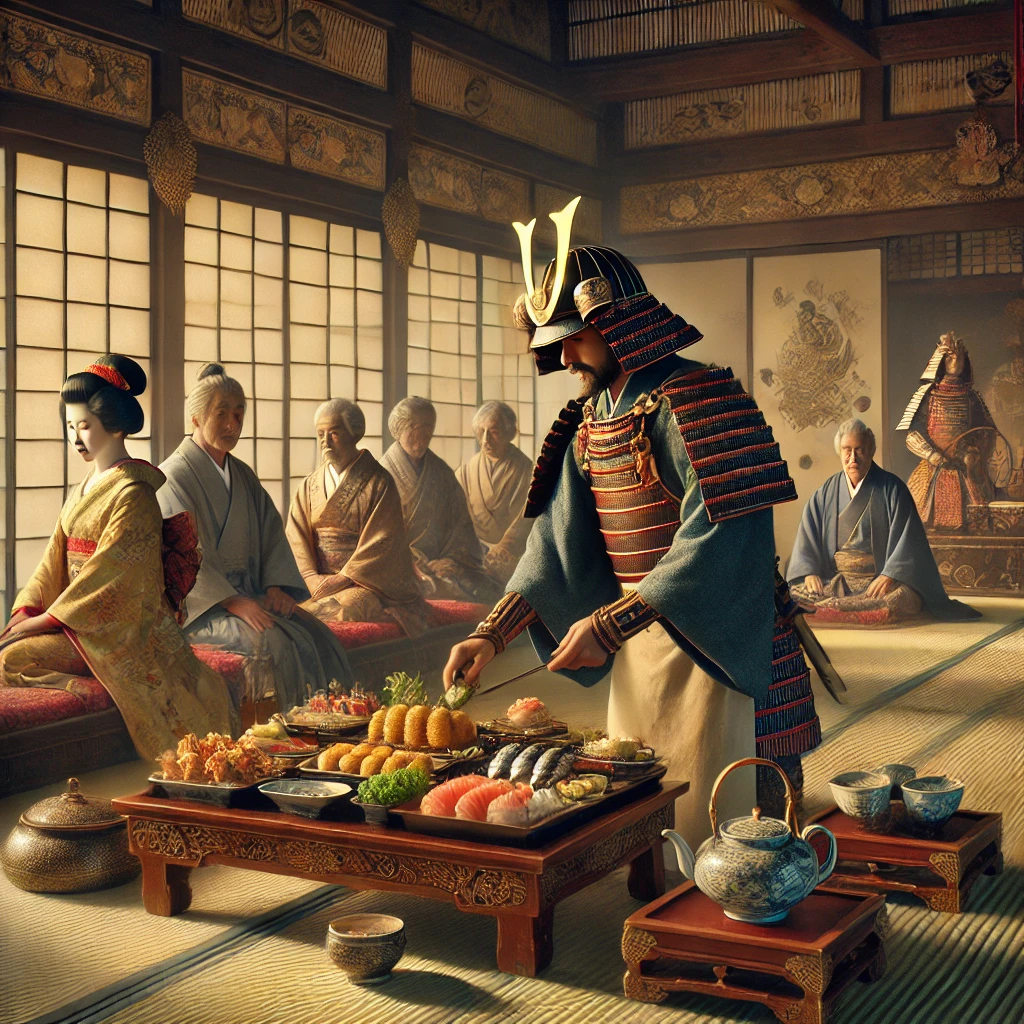
Japanese food culture experienced its greatest development during the Edo period. For example, staple dishes of modern Japanese cuisine such as soba noodles, tempura, nigiri sushi, and grilled eel kabayaki all originated as the four famous delicacies of Edo.

After the Sengoku period ended and the Edo period began, Japan entered a 265-year-long era of peace. This brought an influx of people from various regions to Edo. Additionally, time that had previously been spent on “fighting” and “survival” during the war-torn era was now devoted to “aesthetic refinement” and “culture” in this peaceful era. Samurai began preparing meals for the emperor and shogun, and street vendors in Edo sold tempura and sushi.

As a result, meticulous and carefully crafted dishes were developed. This also led to the gathering of diverse regional food cultures in Edo, and with the city’s growth, a new “Edo cuisine” was born, enriched by the abundant seasonings such as soy sauce, sake, mirin, miso, and oil brought in from Osaka, known as the “Kitchen of the Nation.”

The traditional food culture of Japan is called WASHOKU, and it was inscribed on UNESCO’s Intangible Cultural Heritage list in 2013. WASHOKU is also recognized internationally as a “healthy and well-balanced diet.” The Ministry of Agriculture, Forestry and Fisheries defines the characteristics of traditional Japanese food culture as follows:
- Respect for diverse and fresh ingredients and their natural flavors
- Nutritional balance that supports a healthy lifestyle
- Expression of natural beauty and the changing seasons
- A close connection with annual events such as New Year’s celebrations
Comments
Post a Comment